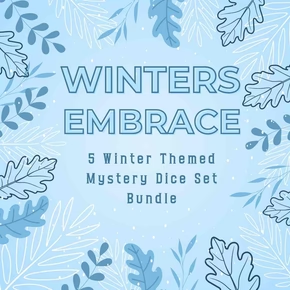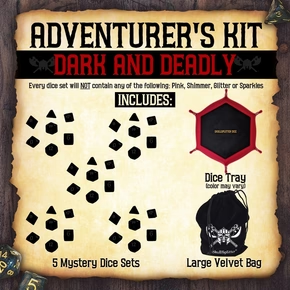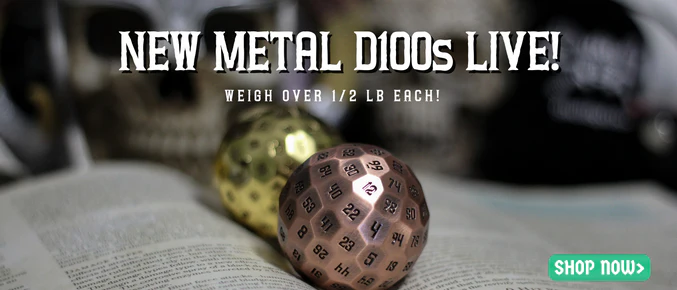
Reborn 5e Guide
Their Deaths Were Highly Exaggerated
Death isn’t the handicap it used to be, and you can still haul your dead carcass off to the next adventure as a reborn! Newly introduced in Van Richten’s Guide to Ravenloft, 5e players can customize the undead monstrosity of their dreams and unleash them into their next campaign. Rather than specifically ghosts, zombies, or skeletons, reborn cast a wide net over any sort of not-dead you can come up with. You could be raised by necromancy, cursed to walk the earth, a resurrection gone wrong, or a spiritual husk with some serious adventure-based unfinished business. Dig your way out of your grave and avoid the angry villagers as we go through everything you need to know..
Table of Contents:

What’s a Reborn?
Rather than create a playable race for a bunch of different undead (which would have been cool honestly) 5e has created a catch-all term for all sorts of undead as a single playable lineage. You died and have somehow come back to life in about the vaguest way possible, and exactly what you are now and even what you were before is really up to you. If you have a story in mind (or your DM does) that involves a less-than-alive character, the reborn lineage is meant to cover it.
Designing Your Reborn
A reborn can be anything from a guy with a pallid complexion all the way to a literal skeleton. You could be zombified, a stitched-together Frankenstein's monster, or only most of a corpse held together by ectoplasmic spiritual bits. You’ll always get the same stats, but you have a lot of creatively morbid options to play around with. Try going off your horror movie trope of choice, but keep in mind you’ll still have to head into town without getting chased off by an angry mob.
Want Endless Dice? Check out our dice subscription:
Base Race
We’ll get into the mechanical implications more in a bit, but reborn is a lineage rather than a race. Everybody dies and that means anybody could be raised from the dead and your “original form” could be any playable race. You could be a zombified lizardfolk, a ghostly elf, or maybe a gnome skeleton. A lot of this is just cosmetic except for a few lingering mechanics you can keep from your base race, but you can craft a completely unique undead and no two reborn should be exactly alike (though now that I think of it creepy undead twins could be fun).
Origins
When it comes right down to it, how did you die and how did you un-die? Were you murdered in cold blood and reborn as a vengeful spirit? Were you a necromancer’s minion who regained their sentience and sanity? Are you a cobbled together pile of parts left to discover a new life? You could be cursed, a failed resurrection, or maybe you were buried in the pet cemetery! There’re a million and one horror movie reasons to become reborn, and you can be as straightforward or mysterious as you like with it. Try to coordinate with your DM on exactly how you beat death, as it can make for a wonderful plot point later on.
Faded Memories
As a reborn you have had your memory “interrupted”, largely because you spent at least some time being dead. This can be as minimal as just not remembering what transpired when you were dead, to a complete erasure of all your experiences before you were reborn. You can treat it like a minor memory problem or your reborn could be a complete blank slate relearning how to live from square one. One of the best ways to use this is to come up with some vague half-memories to give your DM, who can then decide what they actually mean, and you can discover for yourself the person your character once was.
Lineage Not Race
Tasha’s Cauldron of Everything introduced lineages as a sort of alternative to races, and the reborn are designed as a lineage as opposed to a race which is a bit more complicated.
You can take a lineage later through roleplaying (if say you die and get returned all zombified) which means you could easily be a reborn halfling, or a reborn goliath, or a reborn half-elf. I found that the book explained this whole situation poorly but you basically have 3 options for playing the reborn:
- Create a reborn during character creation, using only the reborn stats.
- Create a reborn during character creation, using another race’s stats that are then modified by the reborn stats.
- Create a character using a different race, who then becomes a reborn during the campaign and has their stats modified to reborn stats.
Reborn Features
As this is a lineage rather than a race what exact features a reborn has depend on how you made them and if you used a base race. We also can’t print the exact rules here (WotC wants you to buy a book) but we can paraphrase the rules so you get the gist and then explain what they’ll mean for your new reborn character.
Ability Score Increase
If you make your reborn from scratch, you have to follow the lineage rules for picking out your ability scores. Lineages don’t have presets on your ability scores, instead you simply put +2 in an ability score of your choice and +1 in another ability score of your choice. Or you can put +1 in three different ability scores.
Where it gets weird is what happens if you take a race and transform into a reborn? The book uses some very loose and funky wording, but best I can figure you’ll have to replace the existing ability score bonuses of your race with the “pick whatever” mode of a lineage.
Size
In a very strange wording, you “choose” to either be small or medium when you create your reborn. This is obviously to accommodate any race that you want to use as your “original” form from before you were turned into a reborn.
You get to make this “choice” on your size when you gain the lineage, and the way it’s worded you could actually choose to distort your “base race” size if you wanted. So bizarrely, this feature allows you to create things like small-sized reborn orcs, or medium-sized reborn goblins.
Speed
Reborn have a normal 30-foot movement speed (which is odd as I expected them to be slower and “shambling”) but it’s nothing to complain about. Remember your movement will be 30 feet even if your base race’s speed was higher or lower, so there’s no advantage to picking a base race for faster movement.
Ancestral Legacy
This is the “big” part of your original “base race” you get to keep while everything else gets chucked in the bin. If your base race gave you any skill proficiencies, you keep them. If your base race had any alternate movement speeds (climb, fly, swim) you get to keep those too.
If your base race didn’t grant you any proficiencies or special movement types, you instead get to gain proficiency with any two skills of your choice.
This was a very strange way of doing things that weirdly incentivizes you to choose a “base race” that grants alternate movement speeds and ideally proficiencies as well. Two skills isn’t a bad trade off either so it’s not obligatory, but I anticipate a lot of “reborn tritons or aarakocras” in the future from people trying to game the system. For reference the 5e races that grant climbing speeds, flying speeds, or swimming speeds are: aarakocra, genasi (water), lizardfolk, merfolk, tabaxi, and tritons.
Deathless Nature
Here we get the reborn’s core feature that’s really meant to represent your “not alive” nature. They use a bunch of different abilities here all in one big gumbo pot of deadness so you’re not getting anything unique for saying you’re more like a zombie or a skeleton, but it does a fair job of making your undead-ness matter:
- You have advantage on saving throws against diseases.
- You have advantage on saving throws against poisons.
- You have resistance to poison damage.
- You have advantage on any death saving throws.
- You’re dead, so you are fine without eating, drinking, or even breathing.
- Just like elves, you are immune to sleep effects and can’t be put to sleep.
- Also, like elves, you only need 4 hours for a long rest, which you spend quietly and motionlessly contemplating your shattered past.
All of this together will make your reborn character very resilient against certain threats. Advantage on death saves is huge, and you’ll be very likely to survive being downed compared to most player characters.
Knowledge from a Past Life
Your memories are all scrambled but sometimes you get nuggets of wisdom out of the jumble. You can choose to add a d6 to any skill check, and you can choose to throw in that extra d6 after you roll the d20 but before the DM tells you what happens. You get to do this a number of times equal to your proficiency bonus and they recharge on a long rest.
This feature is versatile, and basically whenever a skill check really matters and you think your roll is just under the threshold, you can push it over the top. It can also be used in addition to things like the bless spell and other bonuses to skill checks so the reborn may oddly be one of the best bases for a skill utility character.
In addition, one thing you may have noticed missing from this list was a “languages” trait, and that’s because the new lineages system doesn’t have them. Instead, you know common and one language “you and your DM agree on”. This is obviously pretty squishy, but it’s an effort to let the DM dictate the languages of their setting rather than your racial selections. However, if you start your reborn build as a race, you just keep the languages that race had.
Reborn Builds
Races aren’t actually that big of a part of your character when it comes down to it and these new lineages are even less build-dependent since your ability score increases are fully adjustable now. Any combination of class and background will work fine for your reborn character but if you’re interested in making the absolute most of your abilities there are a few strategies that synergize with the reborn features:
Banshee Bard
The reborn feature knowledge from a past life can uniquely stack up with the college of spirits bard to be the ultimate skill monkey. The college of spirits gives you access to the bless cantrip, which can stack up with the base bard’s jack of all trades feature and combined with knowledge from a past life you’ll be able to add 1d6 + 1d4 + half your proficiency bonus to ANY skill check, and far more to those you select with expertise or actually have proficiency in. This means even with a base 10 (+0) bonus to a skill and no proficiency; your bard can roll an average of 17 (d20 + 1d4 + 1d6 + 1) on literally any skill check as early as level 3 for your WORST skill checks and far more on others.
Undead Goblin in a Box
Of all the interesting abilities the reborn gain from their deathless nature feature, the ability to go without breathing has some of the most devious applications. You could be sealed up in practically anything and “survive”, including perfectly sealed containers or even bags of holding. Like a macabre jack-in-the-box, you can infiltrate a lot of places by packing yourself into spaces where nothing could be expected to survive, and then springing out when the coast is clear, or your target is within range. This strategy works best with any small-sized reborn, and typically works best with aggressive martial classes like fighters, monks, or even barbarians.
---
Enjoy this Guide? You May Also Like:
Need a New Dice Set? Check out our DND Dice here. They are perfect for every gamer as a gift or just treating yourself!
Thinking about other classes? Check out our giant list of D&D 5e Tools and Tips here.
New to find a D&D Group? Check out our guide on How to Find a D&D Group.
Ever wanted to be a centaur? our Centaur 5e Guide has you covered!
Our DND 5e Deities blog post shows you everything you need to know about D&D gods!
Want to play a flying (ok gliding) space monkey? Check out our SpellJammer Hadozee 5e Guide
Want to play a vampire in D&D? Check out our Dhampir 5e guide!
DO I GIVE THEM THE RED POTION OR THE REALLY RED POTION? Know before you throw with our Healing Potions in DND 5e Guide
Space Hamsters? Ooze PCs? Check out our Spelljammer Adventures in Space review
Want to play an elf from the stars? Check out our Astral Elf 5e guide!

Disclaimer
Last updated: January 27, 2019
The information contained on www.SkullSplitterDice.com website (the "Service") is for general information purposes only.
www.SkullSplitterDice.com is a participant in the Amazon Services LLC Associates Program, an affiliate advertising program designed to provide a means for sites to earn advertising fees by advertising and linking to Amazon.com. (source: Section 5)
Blueshift Nine, LLC assumes no responsibility for errors or omissions in the contents on the Service.
In no event shall Blueshift Nine, LLC be liable for any special, direct, indirect, consequential, or incidental damages or any damages whatsoever, whether in an action of contract, negligence or other tort, arising out of or in connection with the use of the Service or the contents of the Service. Blueshift Nine, LLC reserves the right to make additions, deletions, or modification to the contents on the Service at any time without prior notice.
Blueshift Nine, LLC does not warrant that the Service is free of viruses or other harmful components.
Affiliate disclaimer
This affiliate disclosure details the affiliate relationships of Blueshift Nine, LLC with other companies and products.
Some of the links are "affiliate links", a link with a special tracking code. This means if you click on an affiliate link and purchase the item, we will receive an affiliate commission.
The price of the item is the same whether it is an affiliate link or not. Regardless, we only recommend products or services we believe will add value to our readers.
By using the affiliate links, you are helping support the Service, and we genuinely appreciate your support.
Affiliate advertising programs that the Service uses are:
- Amazon Services LLC Associates Program
- As an Amazon Associate, I earn from qualifying purchases.
- Blueshift Nine, LLC is a participant in the Amazon Services LLC Associates Program, an affiliate advertising program designed to provide a means for sites to earn advertising fees by advertising and linking to Amazon.com or endless.com, MYHABIT.com, SmallParts.com, or AmazonWireless.com.
- Pages on this Service may include affiliate links to Amazon and its affiliate sites on which the owner of this Service, Blueshift Nine, LLC, will make a referral commission.



